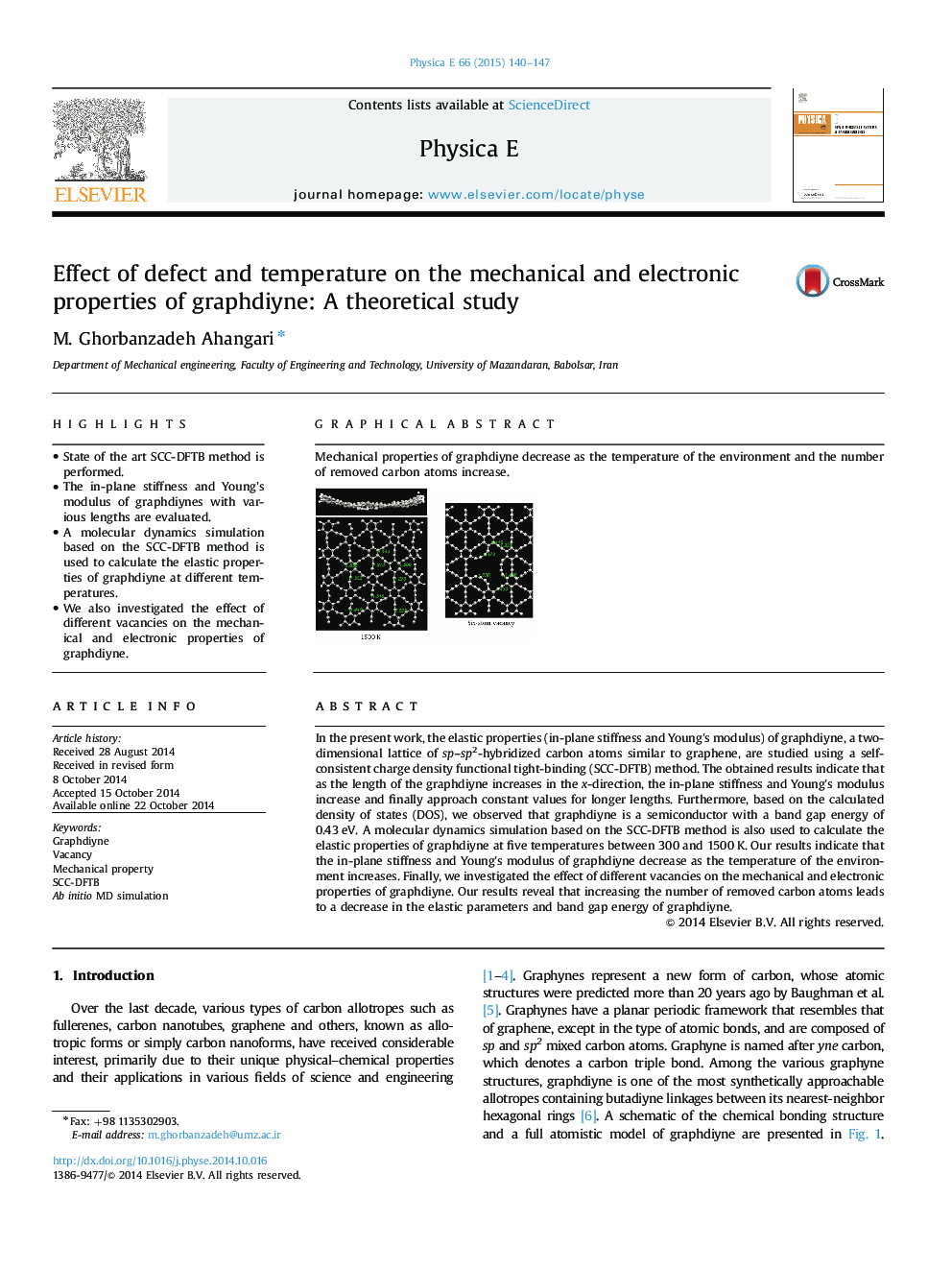| Article ID | Journal | Published Year | Pages | File Type |
|---|---|---|---|---|
| 1544136 | Physica E: Low-dimensional Systems and Nanostructures | 2015 | 8 Pages |
•State of the art SCC-DFTB method is performed.•The in-plane stiffness and Young's modulus of graphdiynes with various lengths are evaluated.•A molecular dynamics simulation based on the SCC-DFTB method is used to calculate the elastic properties of graphdiyne at different temperatures.•We also investigated the effect of different vacancies on the mechanical and electronic properties of graphdiyne.
In the present work, the elastic properties (in-plane stiffness and Young's modulus) of graphdiyne, a two-dimensional lattice of sp–sp2-hybridized carbon atoms similar to graphene, are studied using a self-consistent charge density functional tight-binding (SCC-DFTB) method. The obtained results indicate that as the length of the graphdiyne increases in the x-direction, the in-plane stiffness and Young's modulus increase and finally approach constant values for longer lengths. Furthermore, based on the calculated density of states (DOS), we observed that graphdiyne is a semiconductor with a band gap energy of 0.43 eV. A molecular dynamics simulation based on the SCC-DFTB method is also used to calculate the elastic properties of graphdiyne at five temperatures between 300 and 1500 K. Our results indicate that the in-plane stiffness and Young's modulus of graphdiyne decrease as the temperature of the environment increases. Finally, we investigated the effect of different vacancies on the mechanical and electronic properties of graphdiyne. Our results reveal that increasing the number of removed carbon atoms leads to a decrease in the elastic parameters and band gap energy of graphdiyne.
Graphical abstractMechanical properties of graphdiyne decrease as the temperature of the environment and the number of removed carbon atoms increase.Figure optionsDownload full-size imageDownload as PowerPoint slide
